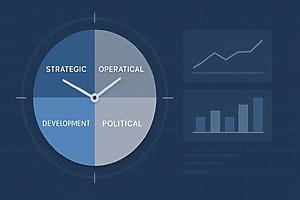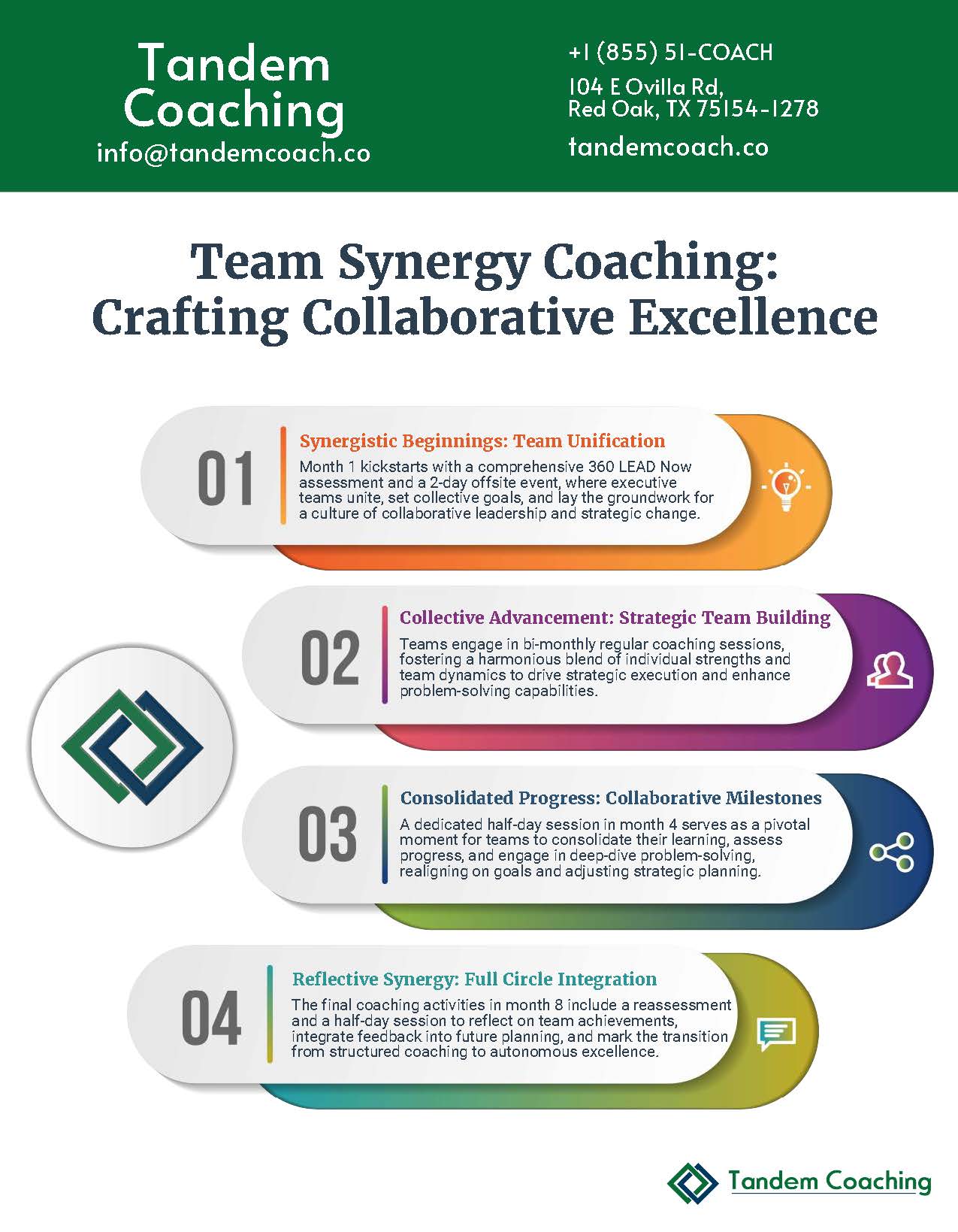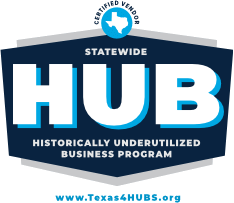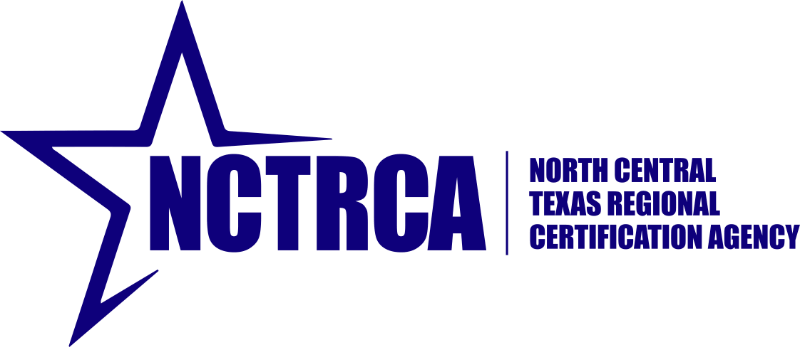Research by leadership development experts Jack Zenger and Joseph Folkman indicates that companies with top-tier leaders are 13 times more likely to surpass their competitors in critical areas such as customer satisfaction, employee engagement, and financial outcomes.
Imagine having a team of leaders who are not just ready for today’s challenges but are equipped to handle tomorrow’s uncertainties.
A well-crafted leadership development action plan can make this vision a reality. By taking deliberate steps to nurture and grow your top talent, you ensure that your leaders continue to evolve, aligning their growth with your organization’s long-term goals.
In this article, we’ll explore actionable strategies for creating a leadership development program that prepares your team for the future while driving continuous improvement.

What is Leadership Development?
Leadership development is the process of enhancing the skills, knowledge, and abilities needed for individuals to thrive in leadership roles. It helps leaders grow both personally and professionally by promoting self-awareness, developing practical skills, and fostering long-term growth.
Interestingly, a leadership study found that only 14% of CEOs are confident they have the leadership skills necessary to perform their role successfully.
Organizations that start developing their high-potential leaders sooner rather than later are 4.2 times more likely to financially outperform ones that don’t; and leaving leadership development up to the individual does not get the desired results.

Key Areas of Leadership Development
Effective leadership development focuses on self-awareness, helping leaders reflect on their strengths and areas for improvement.
Practical application is also vital, with leaders gaining experience through real-world challenges. Mentoring and coaching provide crucial guidance \ emphasizing ethics, while values reinforce integrity.
Leadership growth is seen as a continuous, long-term process.
Skills Conveyed
Leadership development programs aim to build skills like active listening, communication, team building, and adaptability. Organizations that invest in leadership development drive better performance, foster innovation, enhance employee engagement, and ensure future leaders are ready to step into critical roles.
By nurturing these areas, organizations create a strong leadership foundation for long-term success.
At Tandem Coaching, our experienced coaches are highly skilled at creating a tailor-made leadership development program for your leaders. Contact us now to benefit from our years of experience and deep expertise.
Why is Leadership Development Important?
Leadership equips leaders with the skills and mindset needed to succeed in the VUCA (volatile, uncertain, complex, and ambiguous) business environment we face today.
Here are some key reasons to invest in leadership development:
- Drives future success by preparing leaders to handle new challenges and motivate their teams.
- Boosts employee engagement by showing commitment to growth, leading to better retention.
- Creates a positive work culture that encourages innovation and collaboration.
- Prepares leaders for change by helping them anticipate and respond to market shifts.
- Builds a leadership pipeline to ensure continuity in critical roles.
Investing in leadership development helps individuals grow personally and professionally, which, in turn, positively impacts the bottom line.

What is a Leadership Development Plan?
A leadership development plan is a strategic guide designed to help individuals enhance their leadership abilities and prepare for future roles.
It serves as a personalized approach to addressing skill gaps while aligning with the needs of both, the individual and the organization. These plans focus on identifying areas for growth, setting clear objectives, and mapping out actionable steps for development.
Key Components of a Leadership Development Plan
A successful leadership development plan has the following components:
- Self-assessment is the first step, allowing leaders to evaluate their strengths and weaknesses. Tools like 360-degree feedback can provide valuable insights.
- Next, it’s essential to identify leadership needs that align with both personal career goals and organizational objectives.
- Goal setting follows, with SMART goals that focus on developing critical leadership competencies.
- Development strategies may include training seminars, coaching, and hands-on experiences.
- Regular measurement and analysis are necessary to track progress and make any necessary adjustments.
Benefits of a Leadership Development Action Plan
An action plan for leadership development offers several advantages:
- Focused Growth: It provides a clear framework for leadership growth, ensuring that development efforts are strategic and targeted.
- Preparedness for Change: The right plan helps leaders develop the skills to adapt to industry changes and lead with confidence.
- Better Performance: When leaders grow, they perform better, positively impacting the entire organization.
- Increased Retention: Employees feel valued when their development is prioritized, which can lead to higher retention rates.

How to Create a Leadership Development Plan
Here’s a step-by-step guide to designing a well-structured leadership development plan for growing and nurturing top talent:
1. Assess Current Leadership Capabilities
Start by evaluating your organization’s leadership skills. You can use tools like 360-degree feedback, leadership competency frameworks, and skills gap analyses.
These assessments provide a clear picture of your leaders’ current status and enable you to create your leadership development strategy.
2. Define Leadership Competencies
Next, outline the specific leadership development areas your organization wants to focus on. These might include strategic thinking, emotional intelligence, communication, decision-making, and change management.
Align these skills with your company’s values and long-term goals to ensure they drive success.
3. Set Clear Objectives
Setting clear objectives is crucial to making your leadership development plan actionable.
Use SMART goals — Specific, Measurable, Achievable, Relevant, and Time-bound. For example, you might aim to improve team performance metrics by 20% within six months or develop a group of high-potential employees for senior leadership roles over the next two years.
4. Design Development Activities
To ensure leadership growth, create a variety of effective leadership development activities and learning experiences.
Formal training through workshops and seminars provides foundational knowledge, while on-the-job learning, like cross-functional projects, gives leaders hands-on experience.
Mentoring and coaching offer personalized guidance, and self-directed learning — through books, podcasts, and online courses — keeps development continuous.
5. Implement and Monitor Progress
Once the plan is in motion, regular check-ins help track progress.
Ensure participants meet their goals and gather feedback through formal evaluations and informal conversations. This helps keep the plan on track and allows for timely adjustments.
6. End-of-Program Assessment
Conduct another 360-degree assessment at the end of the program to see the progress made directly.
By using the same assessment and asking the same stakeholders in the leader’s circle, you get a fair and direct comparison that clearly shows in which areas progress has been achieved.
7. Evaluate and Refine
Leadership development is an ongoing process.
Periodically review the plan’s impact by comparing progress to the initial objectives. Collect feedback from both, the leaders participating and their teams, and analyze performance indicators to see how leadership growth is affecting overall organizational success. Regular evaluation and adjustment will keep the plan relevant and effective over time.
If you would like guidance in planning your leadership development, our Tandem Coaching leadership experts are happy to bring their extensive experience to the table. Reach out to us now to get started.

Leadership Development Plan Examples
Examples of leadership development plans include:
Change Management Plan
Goal: Develop change management skills to lead organizational transformations
Actions:
- Attend a change management certification program within 3 months
- Lead a small-scale change initiative within the team
- Create a change management toolkit with best practices and frameworks
- Shadow senior leaders during major change projects
Timeline: 12-15 months
Inclusive Leadership Plan
Goal: Foster a more inclusive work environment and leverage diversity
Actions:
- Participate in unconscious bias training within 2 months
- Implement diverse hiring practices in team recruitment
- Host monthly diversity and inclusion discussions with the team
- Mentor employees from underrepresented groups
Timeline: Ongoing

Common Challenges in Leadership Development Planning
While leadership development is invaluable for all the reasons discussed above, planning it often comes with challenges.
Addressing the below obstacles can significantly improve the success of your development plan.
Alignment with Organizational Goals
One common issue is the misalignment between leadership development programs and your organization’s overall goals.
If the program doesn’t support your company’s vision and culture, it may not equip you with the most relevant skills. It will also make it harder to ‘sell’ to the financial decision-maker.
Measuring Effectiveness
Another challenge is accurately assessing the program’s success. Without a clear evaluation strategy, it’s hard to pinpoint what’s working and what needs improvement. This makes it challenging to show the program’s return on investment and can reduce future support.
That’s why, at Tandem Coaching, we start and end the program with a 360-degree assessment to clearly show the progress made.
Sustaining Commitment
Maintaining long-term commitment from leaders and their managers is also difficult.
Without ongoing support, participants can quickly lose focus or struggle to apply new skills on the job.
Ensuring Practical Application
Many leadership programs focus too much on theory and not enough on real-world application. Leaders need opportunities to practice what they’ve learned to confidently bring new skills back to their teams.
Would you like an expert to guide you through the planning and execution of your leadership development program? We’re here to help, ensuring that things go smoothly and your leaders achieve their development goals. Get in touch today.

What Role Does a Mentor Play in Leadership Development?
Mentors are invaluable partners in leadership development. They offer guidance, share their experience, and provide feedback that helps leaders improve.
A mentor can also offer support during challenging times and serve as a sounding board for ideas and decisions.

Frequently Asked Questions (FAQs)
Here are some questions we frequently get about leadership development strategy.
What Are the 5 C’s of Leadership Development?
There are many versions of the ‘5 C’s of leadership.’ We decided to go with the following: Charismatic, Convincing, Credible, Capable, and Creative.
Most of these core attributes that leaders have to develop to be successful can be improved through coaching.
How Long Does it Take to Develop Effective Leadership Skills?
Developing leadership skills is an ongoing process. Some skills can be developed in months, while others, such as strategic thinking, may take years of practice.
How Do You Know if a Leadership Development Program is Effective?
You can measure a program’s success by tracking leadership development goals and measuring improvements in the leaders’ performance, their team’s engagement, and overall organizational results.
Conclusion – Leadership Development Plan
A well-designed leadership development plan nurtures future leaders and ensures that your organization thrives. You can grow leadership talent that drives long-term success by setting clear goals, providing the right resources, and offering ongoing support.
Book a free consultation with our leadership development experts to ensure your leaders get the most effective program for their needs.


















